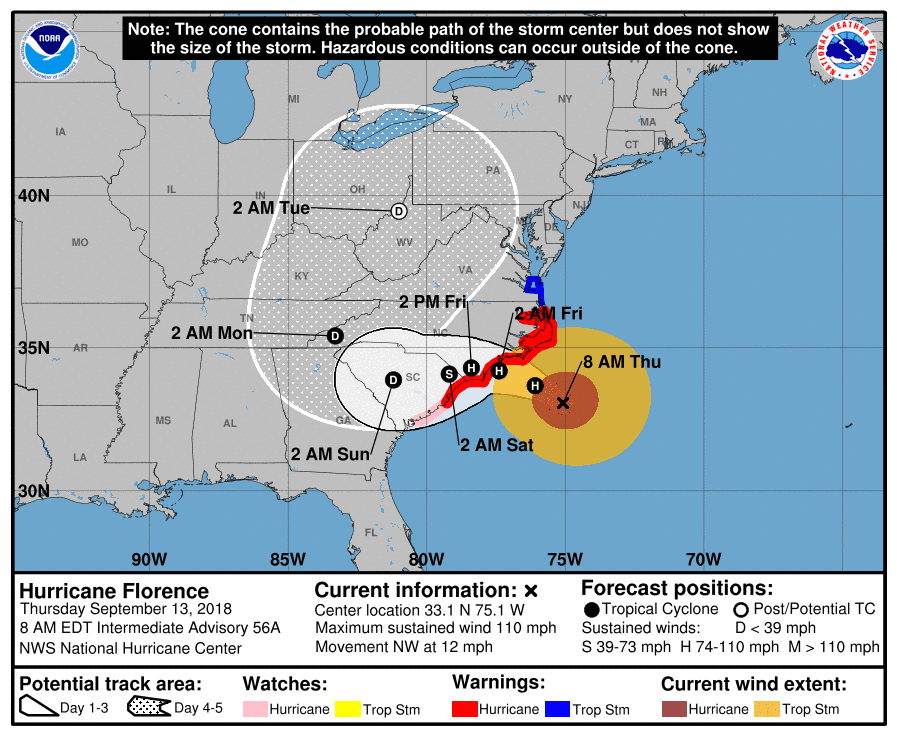One weather forecaster says Hurricane Florence is a “nightmare” to predict.
According to some forecasts, Florence is predicted to slow down and stall off the coast of North and South Carolina before moving around off the shore on Sept. 14, Sept. 15, and Sept. 16. Then the storm is slated to affect Georgia, Tennessee, Virginia, Alabama, and Kentucky before moving north, according to the U.S. National Hurricane Center’s forecasting model.

The NHC said that between 20 and 30 inches of rain could fall in some areas. If the storm lingers longer, more rain will fall, according to forecasters.
“For a meandering storm, the biggest concern—as we saw with Harvey—is the huge amount of rainfall,” said Chris Landsea, chief of tropical analysis and forecast branch at the National Hurricane Center. He’s referring to Hurricane Harvey, which inundated some parts of southern Texas with 60 inches of rain in 2017.
U.S. weather officials said Florence weakened to a Category 2 storm, but the storm, according to NASA in a blog post on Sept. 12, is still more than 400 miles in diameter.
“It certainly is a challenge forecasting precise impacts when its exact track won’t be known until a day in advance,” Landsea told AP.
“It’s going to coming roaring up to the coast Thursday night and say ‘I’m not sure I really want to do this and I’ll just take a tour of the coast and decide where I want to go inland,'” said Jeff Masters, who is the meteorology director of the private Weather Underground website, AP reported.
It added: “As mentioned in the previous discussion, it appears that some southern shear has caused the degradation of the inner core. The global models suggest that this shear will relax today while Florence moves over warm waters, however, given the current storm structure, little overall change in strength is anticipated as Florence approaches the coast.”




